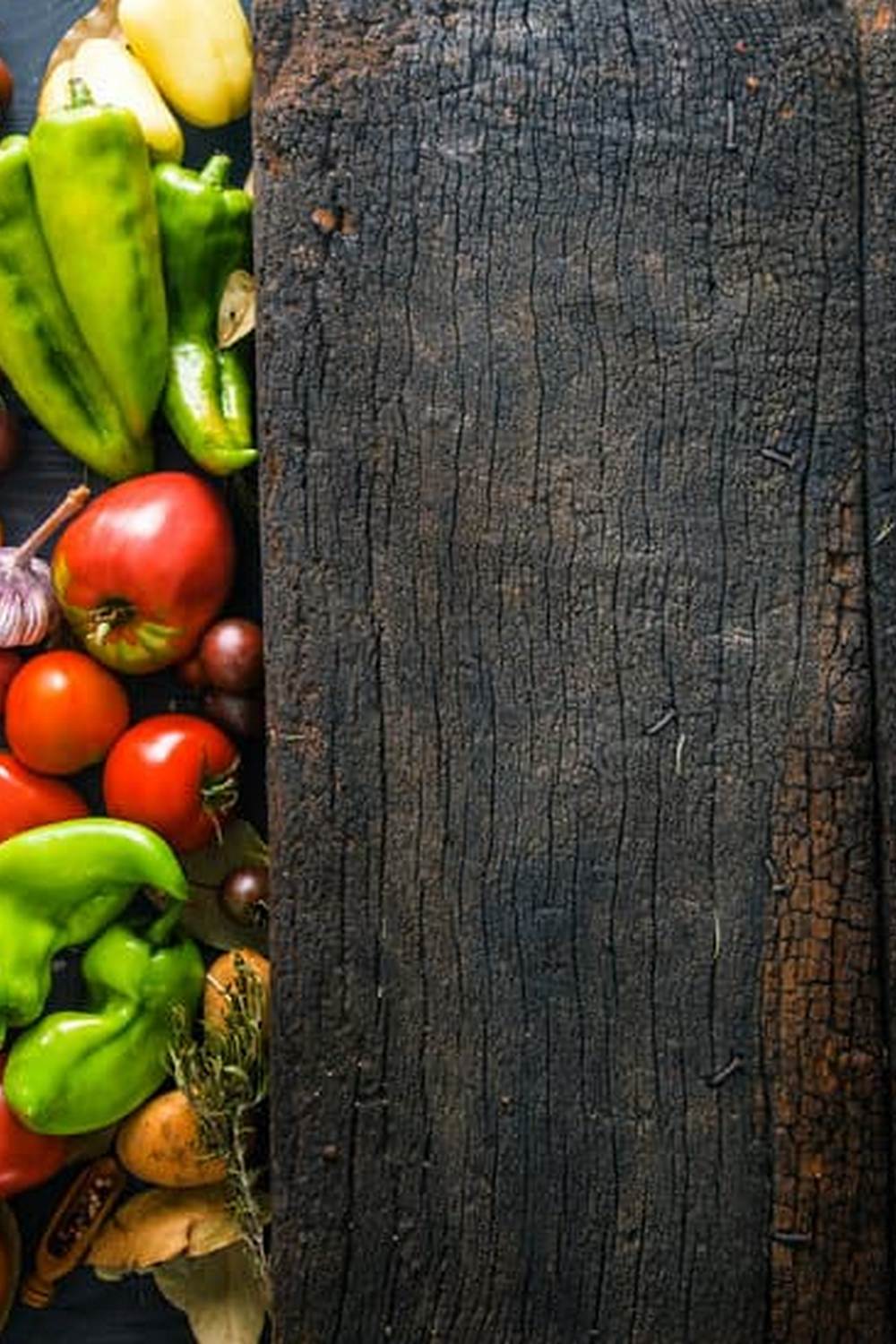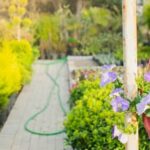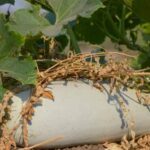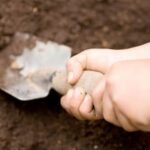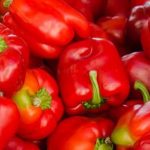Vegetable gardening in Northern Wisconsin presents a unique set of challenges and rewards for gardeners. The region’s specific climate and soil conditions require a thoughtful approach to successfully grow a variety of vegetables. In this article, we will explore the ins and outs of vegetable gardening in Northern Wisconsin, from understanding the impact of the climate to choosing the best vegetables to grow in the area.
Northern Wisconsin’s climate can be quite different from other regions, with its shorter growing season and cooler temperatures. Understanding how these factors impact vegetable gardening is crucial for success. We’ll delve into the specifics of the climate in Northern Wisconsin and how it affects the types of vegetables that thrive in this environment.
One of the first steps to a successful vegetable garden is choosing the right location. Site selection plays a key role in determining the productivity of a garden.
We will provide valuable tips for finding the best location for a vegetable garden in Northern Wisconsin, taking into account factors such as sunlight, drainage, and protection from strong winds. Whether you’re new to gardening or looking to improve your skills, this article will serve as a comprehensive guide to vegetable gardening in Northern Wisconsin.
Understanding the Climate
Northern Wisconsin is known for its unique climate, characterized by cold winters, short growing seasons, and relatively low annual precipitation. These factors can pose significant challenges for vegetable gardening in the region but also create opportunities for resilient and cold-hardy crops. Understanding the impact of the climate is essential for successful vegetable gardening in Northern Wisconsin.
The Impact of Cold Winters
The harsh winter conditions in Northern Wisconsin can limit the length of the growing season and require special considerations for vegetable gardening. Frost dates are a crucial factor to consider when planning a garden, as late spring frosts and early fall frosts can affect the success of certain crops. Gardeners in this region must also take steps to protect their plants from freezing temperatures and heavy snowfall, such as using season extenders like row covers or cold frames.
Adapting to Short Growing Seasons
With a limited window for growing vegetables, gardeners in Northern Wisconsin must carefully select varieties that can mature within the short growing season. Quick-maturing vegetables like radishes, lettuce, and spinach are well-suited to this climate and can be planted early in the spring or grown late into the fall. Succession planting, which involves sowing new seeds every few weeks, can also maximize production within the available growing time.
Managing Low Annual Precipitation
In addition to cold temperatures and short growing seasons, Northern Wisconsin experiences relatively low annual precipitation compared to other regions. This means that vegetable gardens may require supplemental watering during dry periods to ensure healthy plant growth and abundant harvests. Drought-tolerant vegetable varieties and mulching techniques that conserve soil moisture can help mitigate the impact of low precipitation on garden yields.
Understanding these climate-related challenges is key to thriving in vegetable gardening in Northern Wisconsin. With careful planning, strategic crop selection, and proactive management practices, gardeners can overcome these obstacles and enjoy a bountiful harvest of fresh, homegrown produce in this unique northern climate.
Site Selection
When it comes to vegetable gardening in Northern Wisconsin, one of the most important factors for success is choosing the right location for your garden. The region’s unique climate and soil conditions present both challenges and opportunities for gardeners. By carefully selecting the site for your vegetable garden, you can maximize your chances of a bountiful harvest.
Understanding the Climate and Soil
Northern Wisconsin experiences a short growing season with cool temperatures and a significant amount of precipitation. This means that certain vegetables may thrive while others struggle in this environment. Additionally, the soil in the region can vary widely, from sandy loam to dense clay. Understanding the specific climate and soil conditions of your chosen site is essential for successful vegetable gardening in Northern Wisconsin.
Choosing the Best Location
When selecting a location for your vegetable garden, look for an area that receives ample sunlight, ideally at least 6-8 hours per day. Avoid low-lying areas that are prone to standing water, as this can lead to root rot and other issues. Additionally, consider proximity to a water source for irrigation and access to tools and supplies. It’s also important to assess the potential for wind exposure, as strong winds can damage young plants.
Consider Microclimates
In Northern Wisconsin, there may be microclimates within your property that can affect where you choose to plant your garden. For example, south-facing slopes tend to warm up more quickly in the spring and stay warmer during cooler months, making them ideal locations for early season planting. Take note of any existing vegetation or structures that could provide shelter or shade to your garden plots.
By carefully considering these factors when choosing a site for your vegetable garden in Northern Wisconsin, you can set yourself up for a successful growing season. With proper planning and site selection, you can create an optimal environment for your vegetables to thrive despite the challenges of the northern climate.
Best Vegetables to Grow
Choosing the right vegetables to grow in Northern Wisconsin can be crucial to the success of your vegetable garden. The unique climate and soil conditions of the region present both challenges and opportunities when it comes to selecting which crops to cultivate. Here are some of the best vegetables to consider for your Northern Wisconsin garden:
- Potatoes: Potatoes are a hardy and versatile crop that thrives in the cooler temperatures and well-drained soils of Northern Wisconsin. Varieties such as Yukon Gold and Kennebec are well-suited for the region.
- Carrots: Carrots do well in the sandy loam soil commonly found in parts of Northern Wisconsin. They also prefer cooler temperatures, making them an excellent choice for the region’s climate.
- Peas: Peas are cool-season vegetables that can be planted early in the spring in Northern Wisconsin. Varieties like sugar snap peas and shelling peas are particularly well-suited for the area.
When planning your vegetable garden in Northern Wisconsin, it’s important to consider not only the climate and soil conditions, but also factors such as sunlight exposure and water availability. Root vegetables like beets, radishes, and turnips also tend to thrive in the region’s soil, while leafy greens such as lettuce, spinach, and kale can withstand its cooler temperatures.
In addition to these recommendations, it’s essential to choose vegetable varieties that have shorter growing seasons to ensure a successful harvest before the first frost hits. By carefully selecting your vegetable crops based on their adaptability to Northern Wisconsin’s climate and soil conditions, you can increase your chances of a bountiful harvest from your garden.
Planting and Maintenance
When it comes to vegetable gardening in Northern Wisconsin, proper planting and maintenance are crucial for success. The unique climate of the region requires specific strategies for ensuring healthy and productive plants. Here are some step-by-step instructions for planting and caring for a successful vegetable garden in Northern Wisconsin:
1. Soil Preparation: Begin by preparing the soil for planting. Northern Wisconsin’s soil can be acidic, so it’s important to test the pH levels and add lime if necessary to raise the pH to around 6.0-7.0, which is ideal for most vegetables. Incorporate organic matter such as compost or well-rotted manure to improve soil structure and fertility.
2. Vegetable Selection: Choose vegetables that are suitable for the short growing season of Northern Wisconsin. Cold-hardy crops like carrots, beets, kale, broccoli, and Brussels sprouts are good choices. Consider starting seeds indoors or using transplants to get a head start on the growing season.
3. Planting Techniques: Follow recommended spacing and depth guidelines when planting your chosen vegetables. In general, most vegetable plants need full sun (at least 6-8 hours per day) and well-drained soil to thrive.
4. Watering and Fertilizing: Consistent watering is essential for vegetable gardening in Northern Wisconsin, especially during dry spells. Mulching around plants helps retain moisture and suppress weeds. Use a balanced fertilizer according to package instructions to provide essential nutrients throughout the growing season.
5. Weed Control: Regular weeding is necessary to keep your vegetable garden healthy and thriving. Be diligent about removing weeds as they compete with your plants for water, nutrients, and sunlight.
By following these step-by-step instructions for planting and maintaining a vegetable garden in Northern Wisconsin, you can increase your chances of a bountiful harvest despite the challenges posed by the region’s climate and soil conditions. Remember that successful vegetable gardening in this area requires careful planning and attentive care throughout the growing season.
Pest and Disease Management
Every vegetable gardener in Northern Wisconsin knows that dealing with pests and diseases is an inevitable part of the gardening process. The unique climate of Northern Wisconsin can create an environment that is conducive to certain pests and diseases, making it crucial for gardeners to be proactive in preventing and treating these issues.
One of the most common pests in vegetable gardening in Northern Wisconsin is the Colorado potato beetle. This pest can quickly decimate a crop of potatoes, so it’s important for gardeners to monitor their plants regularly for signs of infestation. Using row covers and handpicking the beetles off the plants are effective organic control methods, while insecticidal soaps can also be used for severe infestations.
Another prevalent issue for vegetable gardening in Northern Wisconsin is early blight, a fungal disease that affects tomatoes and potatoes. To prevent early blight, gardeners should ensure proper spacing between plants to improve air circulation, avoid overhead watering which can spread the spores, and apply fungicide preventatively if necessary.
Overall, taking a proactive approach to pest and disease management is essential for successful vegetable gardening in Northern Wisconsin. By staying vigilant and implementing preventive measures, gardeners can minimize the impact of pests and diseases on their crops.
| Pests/Diseases | Preventative Measures |
|---|---|
| Colorado Potato Beetle | Using row covers, handpicking beetles, using insecticidal soaps |
| Early Blight | Proper plant spacing, avoiding overhead watering, applying fungicide preventatively |
Harvesting and Preserving
When it comes to vegetable gardening in Northern Wisconsin, harvesting and preserving the bounty is a key part of the process. The relatively short growing season in this region means that it’s important to make the most of the produce that is grown.
One of the best tips for harvesting vegetables in Northern Wisconsin is to pay close attention to the weather and plan your harvest accordingly. Since the growing season is limited, it’s essential to make sure that you harvest at the right time to maximize your yield.
Preserving the harvest is another important aspect of vegetable gardening in Northern Wisconsin. Due to the shorter growing season, preserving techniques such as canning, freezing, and pickling can help gardeners enjoy their produce throughout the year. Canning is especially popular among gardeners in this region, as it allows them to preserve their fruits and vegetables for an extended period of time.
Another tip for preserving the bounty of a Northern Wisconsin vegetable garden is to take advantage of community resources and local experts. Many areas in Northern Wisconsin have community canneries or kitchens where gardeners can go to learn about proper preservation techniques and get access to equipment for canning or freezing their produce.
| Vegetable | Ideal Harvest Time |
|---|---|
| Tomatoes | Mid-August to Mid-September |
| Zucchini | Early July to Early August |
| Green Beans | Late July to Early August |
Community and Resources
Northern Wisconsin may present some unique challenges for vegetable gardening, but with the right resources and community support, it can be a rewarding and fruitful endeavor. Connecting with local experts, gardening clubs, and resources is essential for success in vegetable gardening in this region.
Local experts such as master gardeners and agricultural extension agents can provide valuable insights into the specific climate, soil conditions, and best practices for vegetable gardening in Northern Wisconsin. These individuals have a wealth of knowledge and experience that can help gardeners navigate the challenges of the region and make informed decisions about what to plant and how to care for their crops.
Joining a gardening club or organization can also be incredibly beneficial for vegetable gardeners in Northern Wisconsin. These groups often organize workshops, events, and educational opportunities that allow members to learn from one another, share tips and tricks, and build a sense of community around their shared passion for gardening. Additionally, being part of a gardening club provides access to a network of fellow gardeners who understand the unique joys and struggles of vegetable gardening in the area.
Finally, there are numerous resources available to vegetable gardeners in Northern Wisconsin, including local nurseries, seed libraries, and online forums or groups dedicated to gardening in the region. These resources can provide access to high-quality seeds and plants that are well-suited to the specific climate of Northern Wisconsin, as well as helpful advice from other gardeners who have experience with vegetable gardening in the area.
By tapping into these community and resources, aspiring vegetable gardeners can set themselves up for success and enjoy a thriving garden despite the challenges posed by the region’s climate.
Conclusion
In conclusion, vegetable gardening in Northern Wisconsin comes with its unique set of challenges due to the region’s specific climate and soil conditions. However, the rewards of growing your own fresh and organic produce far outweigh the difficulties.
The satisfaction of harvesting your own vegetables and the joy of tasting the flavors of homegrown crops make all the hard work worth it. From crisp cucumbers to juicy tomatoes, there is a wide variety of vegetables that thrive in Northern Wisconsin, making it an ideal location for passionate gardeners.
Despite the harsh winters and short growing season, with proper site selection, planting techniques, and pest management, anyone can successfully cultivate a flourishing vegetable garden in Northern Wisconsin. Community support and resources also play a crucial role in providing valuable knowledge and expertise for both seasoned gardeners and beginners alike. Connecting with local experts and gardening clubs is an excellent way to gain insights and share experiences about vegetable gardening in this region.
Whether you’re new to vegetable gardening or have been tending to your garden for years, the beauty of creating your own green haven is truly unparalleled. Therefore, if you haven’t already done so, I strongly encourage you to embark on your very own vegetable gardening journey in Northern Wisconsin.
With patience, dedication, and a bit of trial and error, you’ll soon be enjoying an abundance of delicious homegrown vegetables while basking in the satisfaction that comes from cultivating your own piece of natural beauty.
Frequently Asked Questions
When Should I Plant My Garden in Northern Wisconsin?
In Northern Wisconsin, it is best to plant your garden after the last frost, which is typically around late May to early June. This will ensure that your plants won’t be damaged by any unexpected cold weather.
What Vegetables Are Easiest to Grow in Wisconsin?
Some of the easiest vegetables to grow in Wisconsin include tomatoes, peppers, zucchinis, and cucumbers. These vegetables are relatively low-maintenance and tend to thrive in the climate and soil of Wisconsin.
What Vegetables Grow Best in Northern Gardens?
Vegetables that grow best in northern gardens in Wisconsin include cold-hardy varieties such as carrots, beets, potatoes, and leafy greens like lettuce and kale. These vegetables can withstand the cooler temperatures of the region and are well-suited for northern gardening conditions.

If you’re looking to get into vegetable gardening, or are just looking for some tips on how to make your current garden better, then you’ve come to the right place! My name is Ethel and I have been gardening for years. In this blog, I’m going to share with you some of my best tips on how to create a successful vegetable garden.

